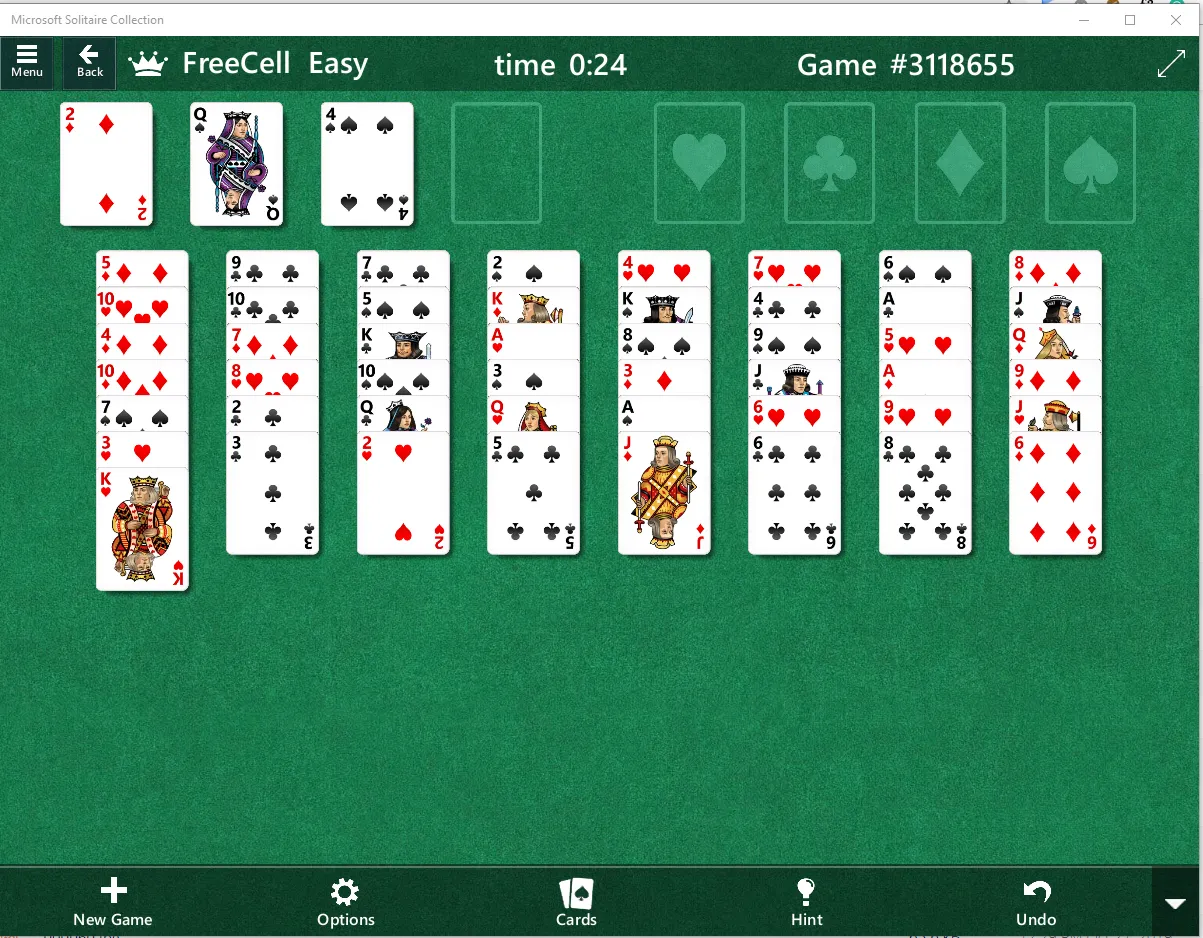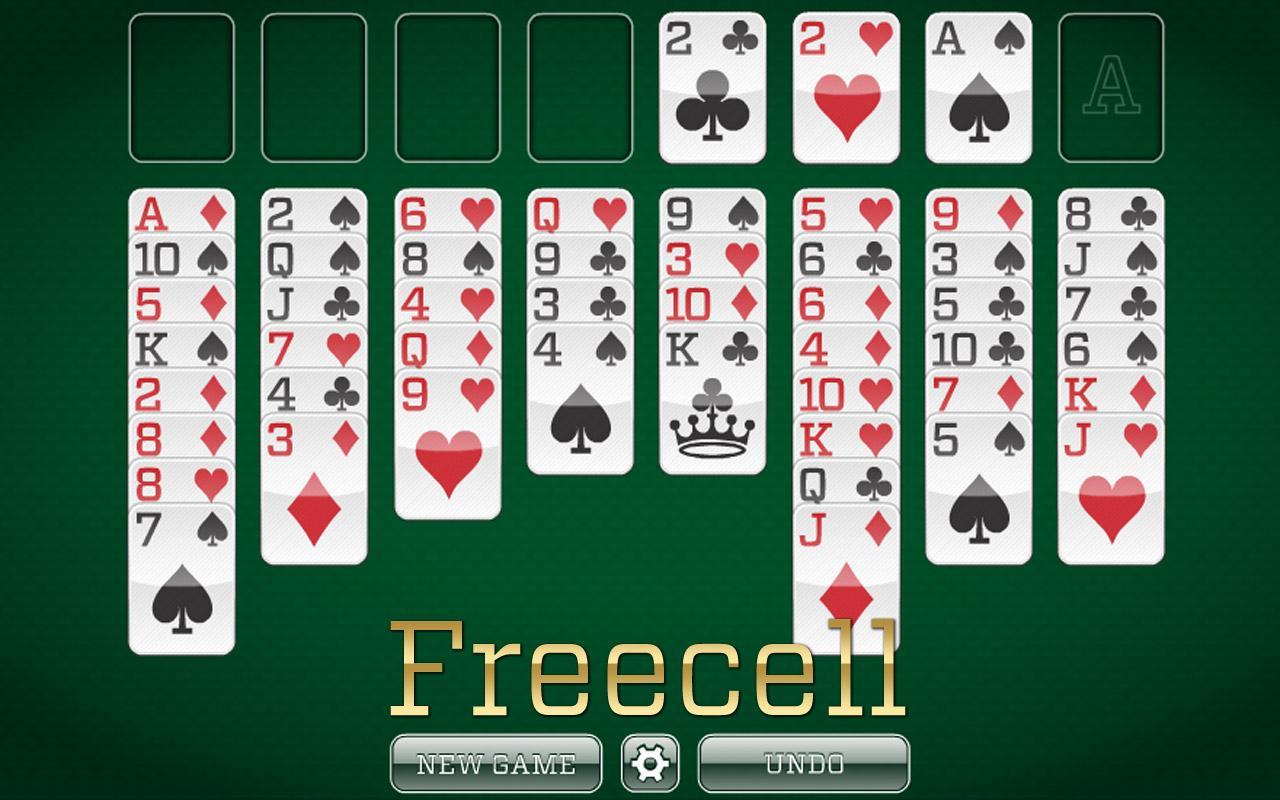
Slots into which a single card can be played and later played back onto the table. Sequences of cards can often be moved together as if they were the highest value card in the sequence, but the rules governing this vary between games. In Solitaire games, cards are typically played onto the next highest cards, such as Eights onto Nines, or Jacks onto Queens. If a Tableau pile runs out, a new one can be started with a King.Ī group of cards arranged in numerical order. When all of the faced up cards are transferred to another pile, the bottom card is flipped over. Cards can be transferred from the discard pile onto the Tableau if the faced up cards follow a descending order (King to Ace) and an alternate color pattern (red and black). Only the bottom card in each pile is facing upward. The first pile has 1 card, the second pile has 2 cards, and so on. The Tableau, or Cascade, is a set of 7 piles of overlapping cards that the player creates at the start of a game. At the start of the game, the Foundations are empty. Cards in a Foundation Pile must be in ascending order (starting with an Ace and ending with a King) and all be in the same suit. The Foundations are four piles (one for each suit) above the Tableau. The goal of solitaire games is to move cards from the tableau, discard, and draw piles into four suited piles (called the foundations) in ascending order (Ace to King). The remaining deck forms the discard and draw piles. The Tableau, or Cascade, is a set of 7 piles of overlapping cards. Solitaire begins by building a grid of cards called a Tableau. Solitaire BasicsĪs the name implies, Solitaire games are typically games that one can play alone, however at CardzMania we also allow solitaire games to be played in parallel with multiple players.

The game is scored based on how many moves the player took to solve it. The game ends when either all the cards have been moved into the foundation piles in order, or the player can find no way to proceed. The Undo button in the bottom left corner will undo the previous move and can be used repeatedly to undo a whole sequence of moves. Once a card has been played into a foundation pile, it cannot be removed.Īny card can be placed in an empty tableau slot. There is a foundation pile slot for each suit. Thereafter, cards of the matching suit can be placed onto the Foundation Pile in ascending sequence. Initially, Aces can be moved into the Foundation Piles. The sequence is moved as if it is its highest value card.
#CARD GAME FREECELL FREE#
For example, if all four free cells are empty, you can move a sequence of five cards, running from a Ten to a Six, onto an exposed Jack. The exposed bottom card of each tableau can be moved, either into a free cell or onto an exposed card of value one higher and of the opposite color.Ī sequence, a group of cards arranged in descending numerical order and of alternating colors, can also be moved together if the length of the sequence is no more than 1 + the number of empty free cells. The blank cells are slots into which a single card can be put on hold in order to be played back onto the table later.

Four Foundation piles are marked with the four suit symbols and four are blank slots for the free cells in the top left corner. The table also features four slots for Foundation Piles in the top right corner. The cards are dealt face up into 8 tableau (also known as cascades, these are columns of overlapping cards, with the bottom card available for play)

Play Multiplayer FreeCell Solitaire Online The Deck and the DealįreeCell uses a standard deck of 52 playing cards. Any card can be placed in an empty tableau slot.The max movable sequence length is 1 + empty free cells.Multiplayer: All players (up to 12) are given the same tableau, and the winner is whoever finishes the game in the fewest moves. Invented in the 1980's, FreeCell is a much easier version of traditional solitaire where players must move all cards into four foundation piles, arranged into suits from Ace to King.


 0 kommentar(er)
0 kommentar(er)
